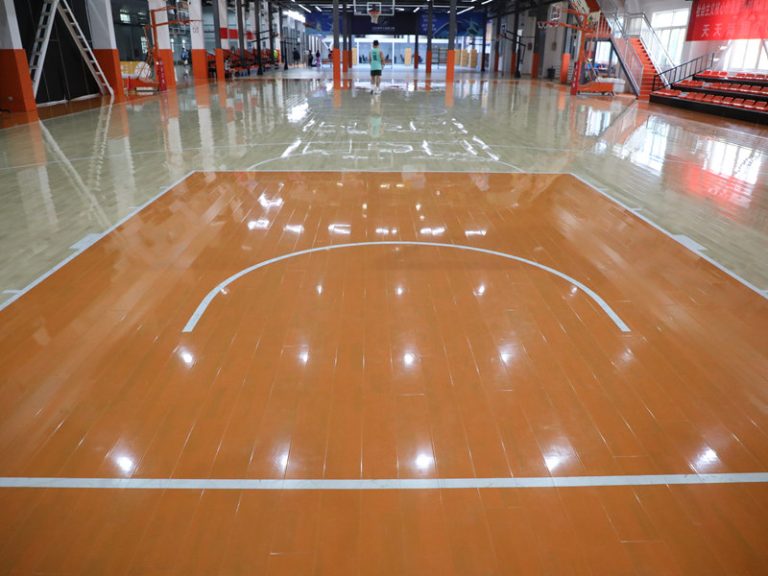When it comes to building or renovating a basketball court, one of the most important decisions you’ll face is choosing the right flooring. The type of surface you install not only affects how the game is played but also determines athlete safety, court durability, and maintenance requirements.
So, what should you consider when it comes to flooring a basketball court?
Why the Right Flooring Matters
Basketball is a high-impact sport that involves running, jumping, and quick directional changes. The floor must absorb shock, provide reliable traction, and offer consistent ball bounce. A poorly chosen surface can lead to injuries, poor performance, or excessive maintenance costs.
Best Materials for Basketball Court Flooring
Hardwood Flooring (Maple)
Used for: NBA, Olympic, and most professional indoor courts
Benefits: Exceptional ball bounce, elegant appearance, long-lasting
Maintenance: Requires refinishing every few years
Engineered Wood Systems
Used for: Indoor training facilities, schools
Benefits: More stable in humid environments, cost-effective alternative
Maintenance: Less sensitive to environmental changes than solid wood
Vinyl or PVC Sports Flooring
Used for: Multi-purpose gyms, community centers
Benefits: Easy to clean, shock-absorbing, good for mixed-use spaces
Maintenance: Minimal, surface cleaning usually sufficient
Modular Interlocking Tiles
Used for: Portable courts, outdoor/indoor hybrid courts
Benefits: Fast installation, removable, customizable designs
Maintenance: Easy to replace damaged tiles
Rubber Flooring
Used for: Weight rooms or zones for strength training within a court facility
Benefits: High impact absorption, excellent for injury prevention
Maintenance: Resistant to heavy equipment but not ideal for basketball play zones
Indoor vs. Outdoor Basketball Flooring
Indoor Courts benefit from hardwood or engineered wood floors for performance and aesthetics.
Outdoor Courts usually require more weather-resistant options like asphalt, concrete with acrylic coating, or modular polypropylene tiles.
Key Considerations Before Installation
Subfloor condition: Ensure a level and dry base before installing any floor system.
Usage level: Daily school use or professional competition? Material choice should reflect intensity.
Budget: Maple hardwood has a higher upfront cost but longer lifespan. Modular or vinyl may be better for smaller budgets.
Climate control: Indoor humidity and temperature changes can affect wood—engineered systems may be more stable.
Portability: If the space is multi-use, portable flooring options make sense.
Maintenance Tips
Clean daily with a microfiber mop or auto-scrubber
Avoid water-based cleaners on hardwood—use pH-neutral products
Refinish hardwood floors every 2–5 years
Inspect seams and expansion gaps on modular or vinyl floors regularly
Final Thoughts
Choosing the right flooring for a basketball court is a crucial investment in performance, safety, and longevity. From hardwood elegance to modular convenience, each material serves a different purpose. Whether you’re building a high-end arena or upgrading a school gym, understanding your needs and selecting the right floor type will set your court up for long-term success.
Want help designing or selecting materials for your court? Let us help you build a court athletes will love to play on.


